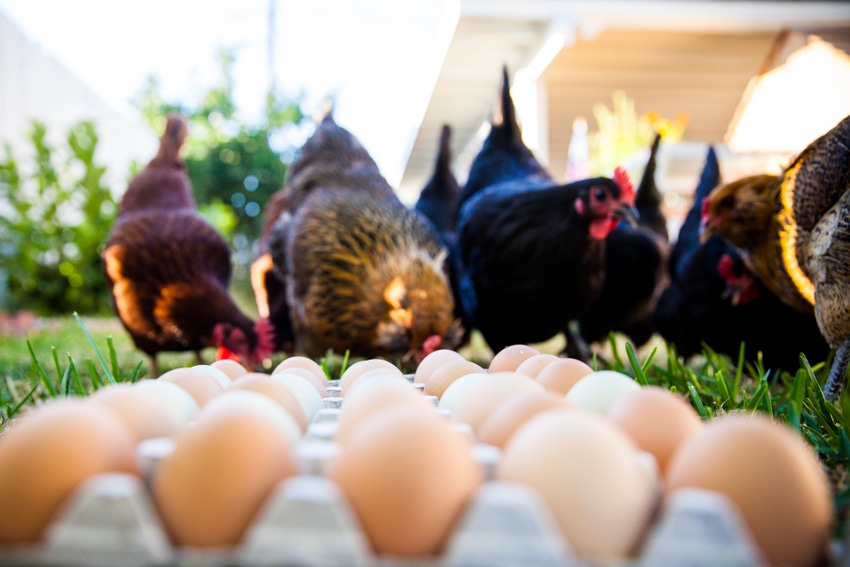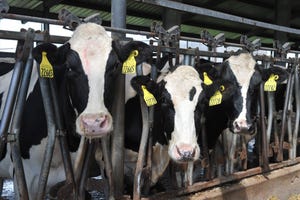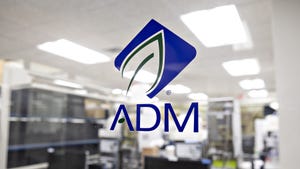USDA finalizes long-awaited Organic Livestock and Poultry Standards
Agency says rule improves uniformity with regard to animal welfare practice requirements.

Agriculture Secretary Tom Vilsack previewed this week the Organic Livestock and Poultry Standards (OLPS) final. The rule establishes clear, strong and consistent standards for organic livestock and poultry production, levels the playing field for organic livestock farmers, ranchers and businesses and promotes fairer, more competitive markets for their products, while providing consumers with more transparency about their purchases.
"USDA is creating a fairer, more competitive and transparent food system. This organic poultry and livestock standard establishes clear and strong standards that will increase the consistency of animal welfare practices in organic production and in how these practices are enforced," said Vilsack. "Competitive markets help deliver greater value to all producers, regardless of size."
According to USDA, the change was driven by strong interest from consumers and the organic industry. During a public comment period, USDA received more than 40,000 written comments, all of which were carefully reviewed to inform drafting of the final rule. USDA also held a listening session on August 2022 to hear public comments on the proposed rule.
OLPS improves uniformity with regard to animal welfare practice requirements for organic livestock and poultry, promoting their well-being and natural behaviors.
The final rule outlines more consistent standards for six key areas, including:
Outdoor space requirements: OLPS sets minimum outdoor space requirements for organic poultry and requires ready access to the outdoors. Outdoor areas must be at least 75% soil and include vegetation to the degree possible. In other word, the rule clarifies that screened-in, enclosed porches do not qualify as sufficient outdoor space for organic chickens.
Indoor and outdoor living conditions: Shelters must have sufficient space for livestock to lie down, stand up, turn around, fully stretch their limbs or wings and express natural behaviors, such as rooting in pigs and scratching in chickens. Bedding areas must be sufficiently large and comfortable to keep livestock hygienic (for the species), dry and free of lesions.
Poultry stocking densities: The rule sets specific requirements for indoor and outdoor stocking densities to align with advisory board recommendations, third-party animal welfare standards and public comments from organic stakeholders.
Preventative health care practices: Producers must maintain preventative health care practices that include sufficient nutrition and comprehensive parasite prevention plans. Animals must be treated with allowed medicines to minimize pain, stress and suffering. All necessary treatment must be administered, even if the animal loses its organic status.
Physical alterations and euthanasia: Physical alterations are permitted only for identification purposes or the safety of the animals, and certain alterations are prohibited altogether. Alterations must be performed at a young age for the species and in a manner that minimizes the animal’s pain and stress. Humane euthanasia may only be used if treatment is not an option.
Transport, handling and slaughter: Operations must describe how organic management and animal welfare will be maintained for transport that exceeds eight hours. Animals must be fit for transport. The mode of transport must be seasonally appropriate to protect livestock from cold or heat. Operations must adhere to USDA (FSIS) humane slaughter standards.
In partnership with USDA-accredited certifiers, USDA’s National Organic Program will oversee the implementation of and enforce compliance with these new, more consistent standards to support the growth of the organic market. Current organic poultry producers have up to five years to implement the new regulations.
Implementing OLPS will give organic livestock and poultry farmers, ranchers and businesses - including those interested in transitioning to organic - more opportunities to compete fairly in the market, USDA said. Additionally, the rule supports ongoing consumer confidence and trust in the USDA organic seal by better aligning the organic standards with consumers’ expectations for animal welfare.
“Many consumers are willing to pay a premium for organic livestock products, particularly for the organic chicken, egg and meat industry,” USDA said. “By increasing consumer trust in the organic label by aligning the organic standard with consumers’ animal welfare preferences, USDA is helping to deliver greater value to producers, and creating a fairer, more competitive and transparent food system.”
Earlier this year, the USDA National Organic Program (NOP) previewed the Strengthening Organic Enforcement (SOE) final rule. The final rule is the biggest update to the organic regulations since the original Act in 1990, providing a significant increase in oversight and enforcement authority to reinforce the trust of consumers, farmers, and those transitioning to organic production.
The final rule will be published in the Federal Register. A preview of the rule is available on the USDA AMS website.
The Organic Trade Association (OTA) celebrated the long-awaited strengthening the standards, calling it “a major win” for organic producers and consumers.
“Almost twenty years in the making, the new rules would not have happened without the persistence of your trade association and our dedicated members,” said Tom Chapman, executive director and CEO of OTA. “These new standards not only create a more level playing field for organic producers, but they ensure consumers that the organic meat, poultry, dairy, and eggs they choose have been raised with plenty of access to the real outdoors, and in humane conditions.”
He continued, “Having clear, consistent and enforceable standards is paramount for the organic sector to maintain consumer trust, and to also ensure that farms and businesses of all sizes have a fair shot at competing in the marketplace by meeting a minimum set of requirements."
About the Author(s)
You May Also Like





